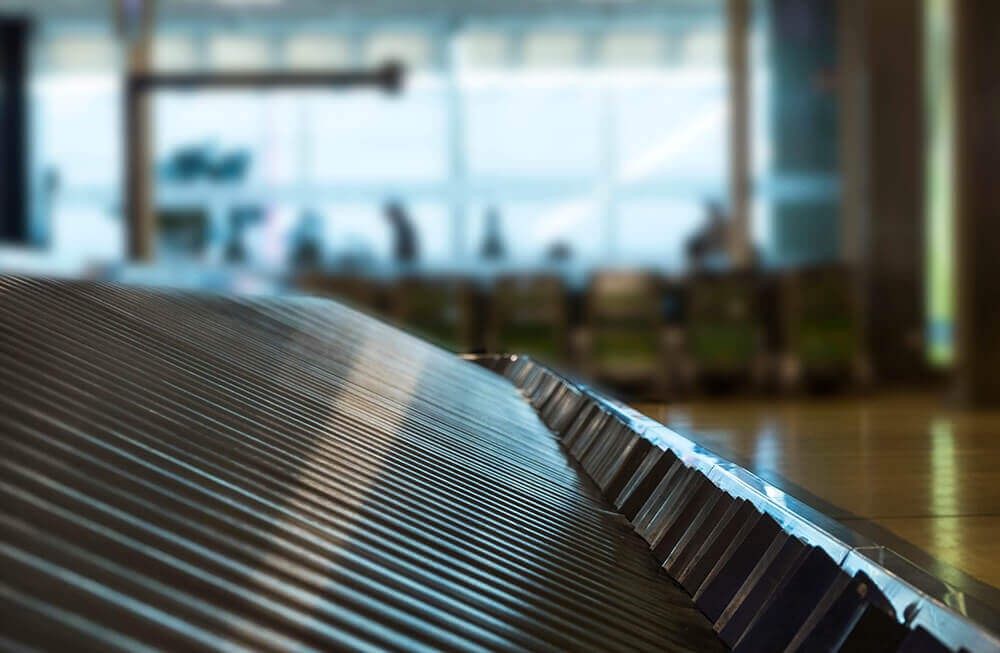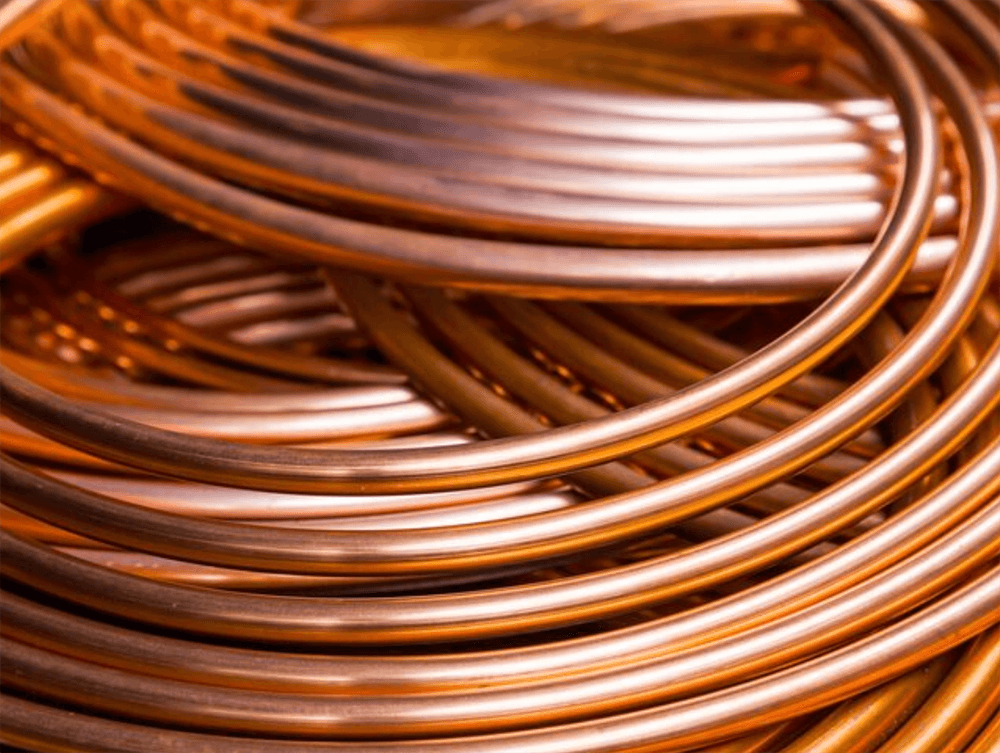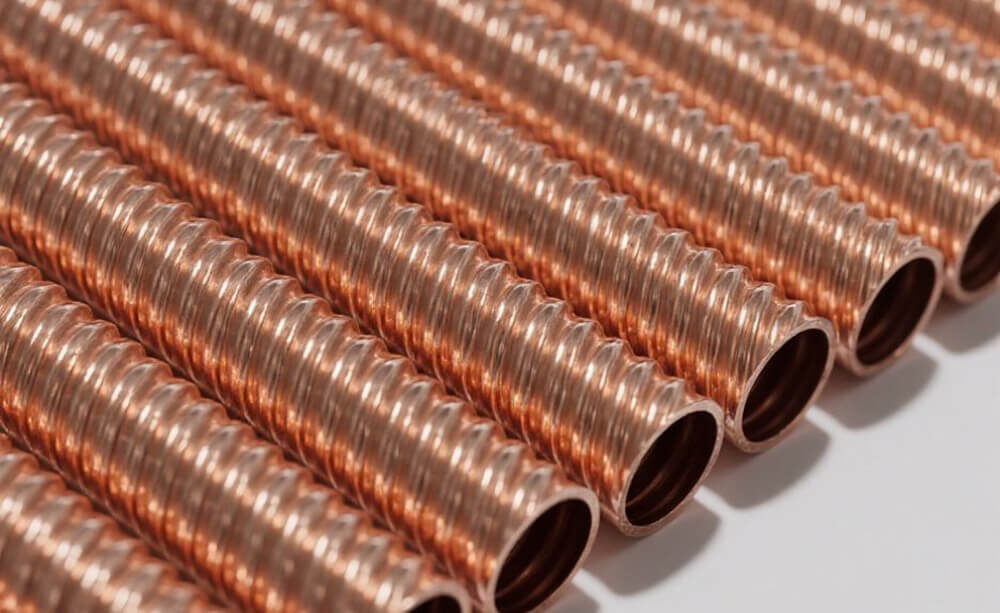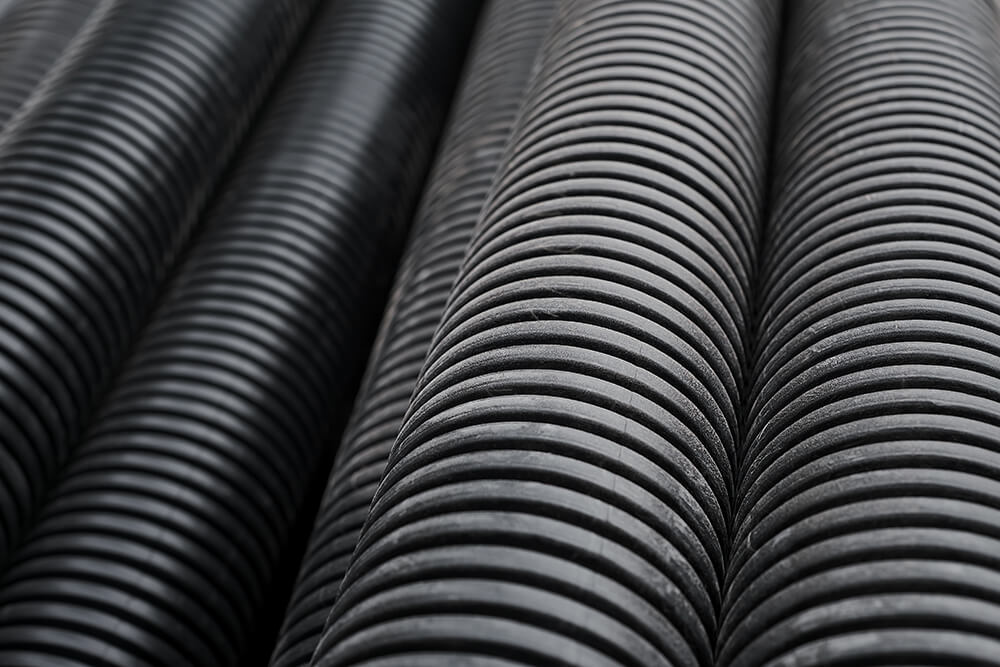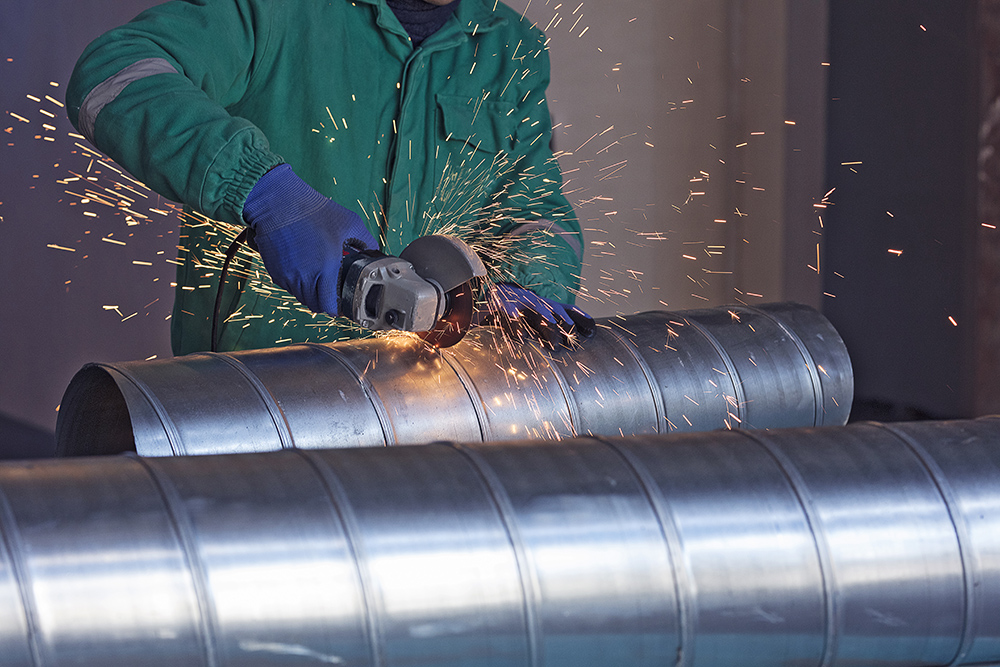In solar water heaters, finned tubes are mainly used in the collector section, which operates as follows:
Absorption of solar energy
Finned tubes usually have a large surface area and are usually coated with a coating that has a high solar energy absorption rate. When the sunlight hits the finned tube, the fins effectively absorb the solar radiation and convert it into heat, raising the temperature of the finned tube.
Heat transfer to the fluid inside the tube: After the finned tube absorbs the heat, it transfers the heat to the copper tube which is in close contact with the fins by means of heat transfer. Due to the good thermal conductivity of the copper tube, heat is transferred quickly from the fins to the inside of the tube. Inside the copper tube there is usually a heat transfer medium, such as hot water or antifreeze, etc., and the heat is transferred to the medium to raise its temperature.
Work material circulation and heat transfer: the heated work material circulates in the system. In the natural circulation of the solar water heater, the density of the workpiece becomes smaller after being heated, and it will flow upward into the storage tank, while the lower temperature and higher density of the workpiece in the storage tank will flow back to the finned tube, forming a natural cycle, so that the heat is continuously transported to the storage tank, so that the temperature of the water in the storage tank rises. In the forced circulation solar water heater, the circulating pump drives the work material to circulate between the finned tube and the storage tank, and more efficiently transfers the heat absorbed by the finned tube to the storage tank to meet the user’s demand for hot water.
To improve the heat exchange efficiency of finned tubes in solar water heaters, we can start from the following aspects:
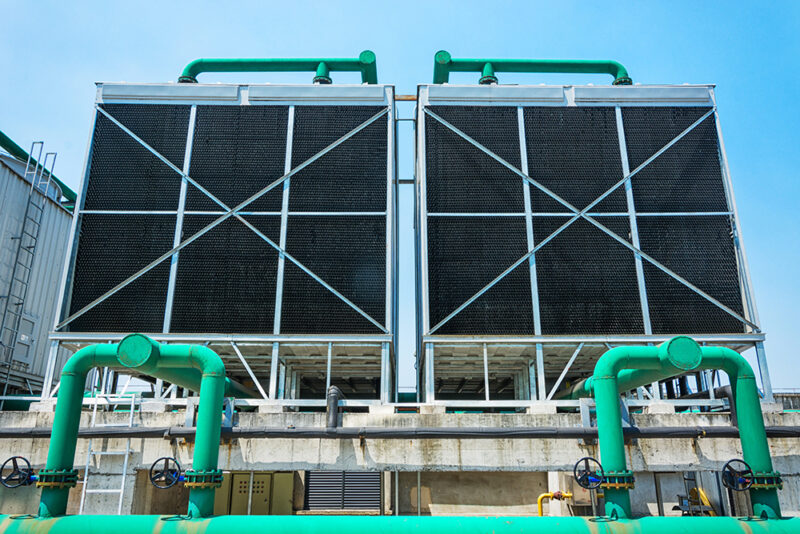
Optimize the fin structure design
Increase the surface area of fins: By reasonably designing the shape, size and spacing of the fins and increasing the surface area of the fins, the heat exchange area between the fins and the outside world can be increased, which can improve the heat absorption capacity. For example, the use of corrugated, serrated and other complex shapes of fins, compared with the traditional rectangular fins, can increase the heat dissipation area in the same space.
Optimize fin spacing: Fin spacing affects the flow characteristics of air or other media between fins. Too large a spacing will reduce the number of fins and decrease the heat dissipation area; too small a spacing will result in poor air circulation and increased flow resistance. Generally speaking, it is necessary to find a suitable fin spacing through experiments and calculations, so that the air can flow smoothly between the fins, while ensuring that there is enough heat dissipation area.
Choosing the right material
High thermal conductivity material: Choose materials with high thermal conductivity to make finned tubes, such as copper and aluminum. Copper has excellent thermal conductivity, but the cost is high; aluminum also has relatively high thermal conductivity and is lightweight and low cost, which is the commonly used finned tube material in solar water heaters. In addition, the surface of the material can be plated with a layer of coating with high emissivity, such as black chrome, black nickel, etc., to improve the absorption rate of solar energy.
Adoption of composite materials: The properties of composite materials are utilized to improve heat transfer efficiency. For example, add a layer of heat-conducting composite materials with porous structure on the fin surface, this material not only has a large specific surface area, can increase the heat absorption capacity, but also improve the heat and mass transfer performance on the fin surface, improve heat transfer efficiency.
Improvement of flow characteristics
Enhancement of work mass perturbation: set up perturbation elements in the finned tube, such as helix, twisted belt, etc., so that the work mass in the tube flow perturbation, destruction of the boundary layer, increase the heat transfer coefficient between the work mass and the tube wall, so as to improve the heat transfer efficiency. In addition, the reasonable design of the flow path of the work material, to avoid flow dead zone or short circuit phenomenon, can also make the work material to fully absorb heat.
Optimize air circulation: For solar water heaters that use air as the cooling medium, the air circulation conditions around the finned tube should be optimized. Reasonable vents can be set up around the collector to ensure that the air can flow smoothly through the finned tube and take away the heat in time. At the same time, the use of fans and other equipment to force ventilation and increase the air flow rate can also enhance the heat exchange effect between the air and the fins.
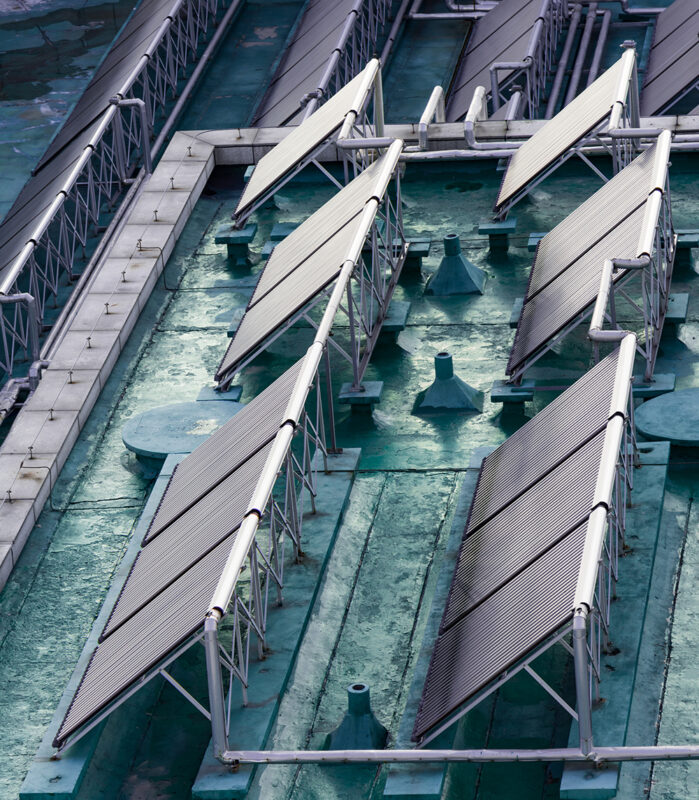
Adoption of advanced manufacturing technology
Precision processing technology: Adoption of precision processing technology, such as CNC machining, laser cutting, etc., can ensure the dimensional accuracy and surface quality of the finned tubes, so as to make the combination between the fins and the copper tubes more compact, reduce the contact thermal resistance and improve the heat transfer efficiency. At the same time, the precise processing technology can also ensure that the shape and spacing of the fins meet the design requirements and optimize the fluid flow characteristics.
Surface treatment technology: Finned tube surface treatment, such as the use of sandblasting, polishing and other processes, can improve the roughness of the surface, increase the surface area, thereby improving heat transfer efficiency. In addition, through chemical plating, electroplating and other methods in the finned tube surface to form a layer of special coatings, not only can improve the corrosion resistance of the surface, but also improve the thermal and physical properties of the surface, which is conducive to the absorption and transfer of heat.
Determining the optimal installation location of the finned tubes in a solar water heater requires comprehensive consideration of a number of factors such as lighting effects, water circulation, system maintenance, etc. The following is a specific analysis:
Ensuring Good Lighting
Orientation Selection: In the northern hemisphere, the finned tubes of a solar water heater should be oriented towards a due-south direction in order to maximize the reception of solar radiation. In the southern hemisphere, it should face due north. This will allow the finned tube to receive direct sunlight for a longer period of time during the day and improve the efficiency of solar energy utilization.
Avoid Shading: The finned tube should be installed in a place where there are no tall buildings, trees, or other obstructions around it. If there is any shading, it will reduce solar energy reception and lower the heating effect of the water heater. At the same time, it is important to stay away from chimneys and other places that may produce dust or smoke to prevent the finned tube surface from accumulating dust and affecting the light.
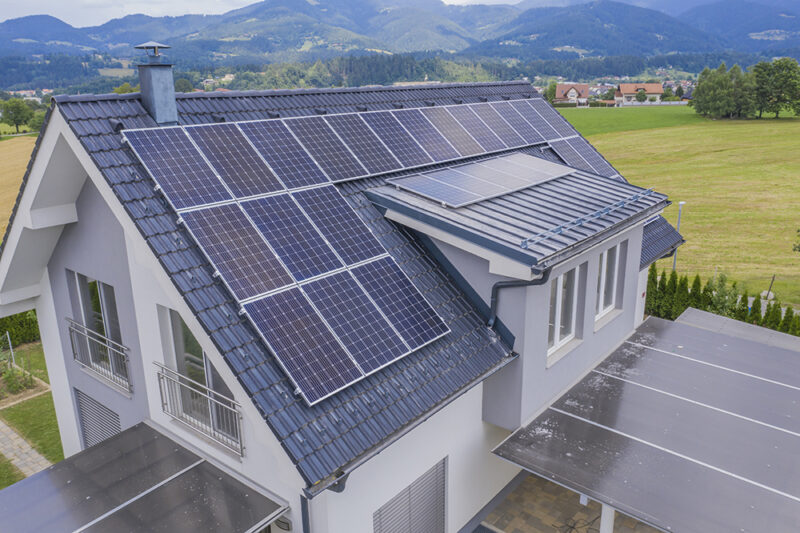
Optimize water circulation
Relative position to the water tank: The finned tube is usually installed below the solar water heater tank, which is conducive to the use of the natural convection principle of hot water rising and cold water falling to form a good water circulation. When the water inside the finned tube is heated, the hot water will naturally rise into the tank, while the cold water in the tank will flow into the finned tube to be heated, thus realizing the automatic circulation of water heating.
Considering piping layout: When installing the finned tube, make the piping connecting the finned tube and the water tank as short and straight as possible, and reduce the elbows and resistance, so as to reduce the resistance of water flow and improve the circulation efficiency. At the same time, “air blocking” should be avoided to ensure smooth water flow.
Convenient for system maintenance
Leave space for maintenance: the installation position of finned tube should be convenient for daily inspection, maintenance and repair. Sufficient space should be left around to facilitate inspection and maintenance operations of finned tubes, piping connection parts, etc. by maintenance personnel. Generally speaking, at least 0.5 – 1 meter space should be left around.
Avoid installing in easy to damage bad place: Do not install the finned tube in the place where it is easy to be hit by external force, such as near the road or the area where objects often move, in order to prevent the finned tube from being damaged and affect the normal operation of the water heater.
In addition, different types of solar water heaters (e.g. flat plate, vacuum tube type) may have some differences in the finned tube installation position, which need to be reasonably adjusted according to the specific water heater structure and design requirements. At the same time, the installation process also needs to follow the relevant installation specifications and standards to ensure the quality and safety of the installation.

